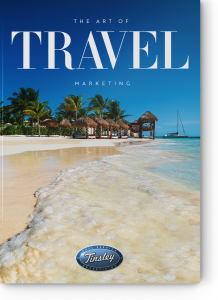How to Speak to the INTERNATIONAL TRAVELER

By Michelle Tannebaum

These are interesting and challenging times in America, to say the least. A strong dollar and controversial immigration and travel policies have led to a decline in U.S. tourism. According to the UNWorldTourism Organization, the number of trips made by global travelers surged 7% in 2017. But they’re just not coming here. Travel to the U.S. fell by 4% in 2017, following a 2% drop the year before…bumping the U.S. to third place among the world’s most visited nations, trailing France and Spain. Now, more than ever, marketers need to put out the welcome mat and send an inviting message to international travelers around the globe.
Notable Global Traveler Insights
In a world drawn closer by the internet, and more informed by 24-hour news cycles, we need to be sensitive to world events. Political unrest and terrorist attacks haven’t affected the overall number of international trips, but they’ve had a significant impact on where travelers choose to go. Destinations with a positive safety message are reaping the rewards.
The cruise industry continues to see explosive growth. Visits to cruise websites have almost doubled in the last three years, with 32% year-over-year growth in 2017 alone, according to Adobe Digital Insights Europe Travel Trends Report 2017. Interest in cruises rises an average of 20% in January- March of each year, with most consumers booking summer cruises in January.
Car rentals, however, are experiencing a decline due to ride-sharing apps like Uber & Lyft and the increased popularity of one-stop destinations such as cruises and all-inclusive resorts.
European Travelers
A strong U.S. dollar makes this a great time for Americans to travel the world, but more expensive for Europeans to come here. They’re still coming, though, thanks to plummeting long-haul air travel prices caused by increased competition from budget airlines. And they’re typically staying two weeks or longer. Germany recorded the highest level of spending
Brazilian Travelers
Despite a deep recession that began in early 2014, and a severe depreciation of the Brazilian Real versus the U.S. dollar that has made travel to the U.S. considerably less affordable, the United States remains the number one destination for Brazilian travelers, and they continue to spend heavily here. In fact, the U.S. attracts more Brazilian travelers than any other country, including their own Latin American neighbors.
Chinese Travelers
Chinese travelers are perhaps the biggest segment to keep an eye on
Some noteworthy insights about the Chinese market come from a study done by TripAdvisor China and The Boston Consulting Group. Chinese travelers prefer to travel in February, May
What does it all mean?
If we’re seeing one consistent pattern, it’s that despite all the politics and global economic turmoil, people from around the world still want to come to the United States. The key is to make them feel welcome when they do.



